Overview
Today, well-designed data platforms are critical for supporting top-down reporting and analysis requirements. RealSoft is a one-stop shop that helps business and analytics leaders use data and technology to drive better insights and actions. Through its reports and advisory services, we help organizations maximize their data and analytics investments. Its researchers and consultants each have more than 25 years of experience in the field. They are uniquely qualified to help business and technical leaders succeed with business intelligence, analytics, data management, data governance, performance management, master data, metadata, data integration, and data science.
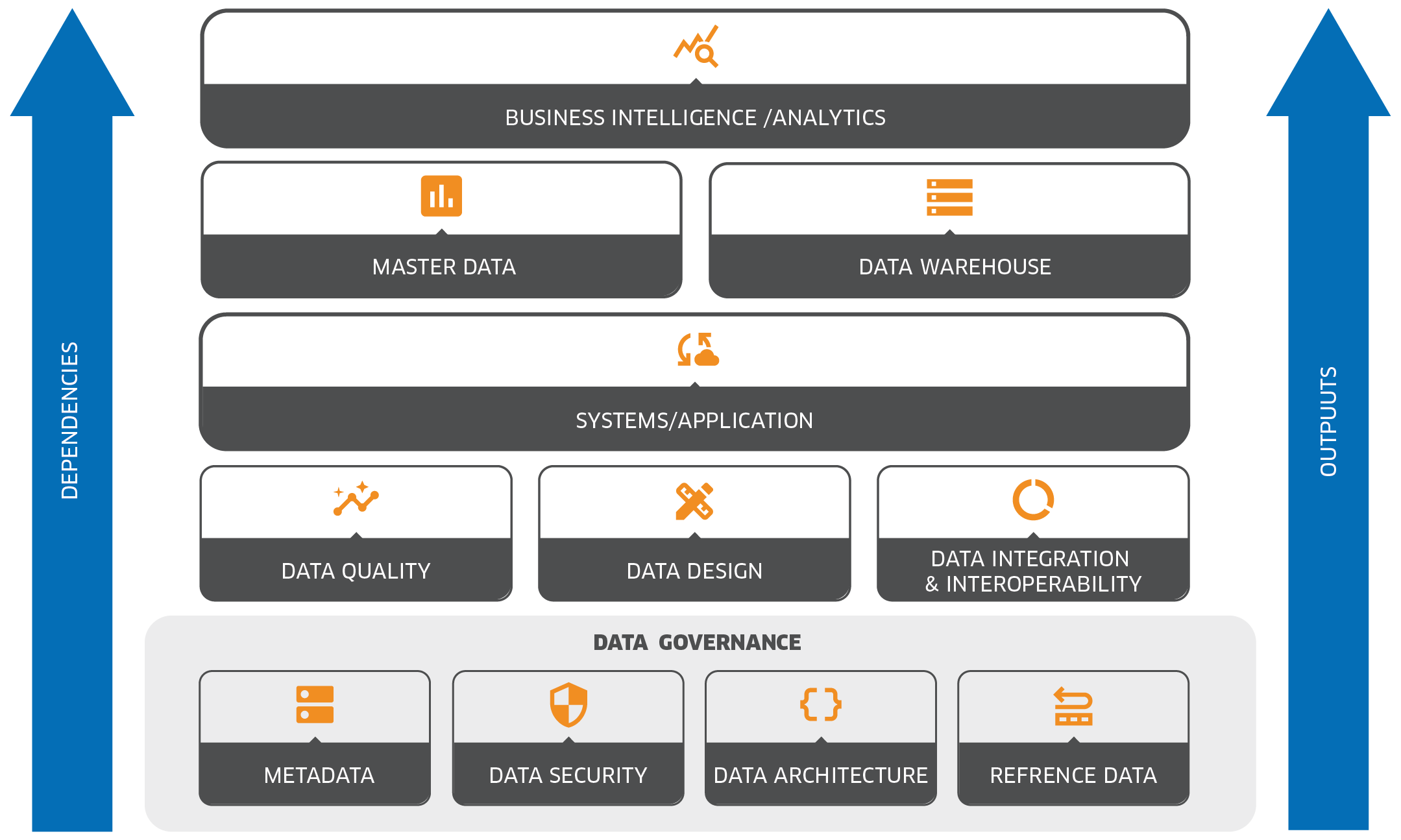
How can we help?
Professional Services
RealSoft has built several big data ecosystems in different domains, e.g., enterprise, sectorial, national, regional, and international for numerous organizations in the MENA region. A modern information supply chain refines data in zones while providing different types of users access to optimal points in the supply chain.
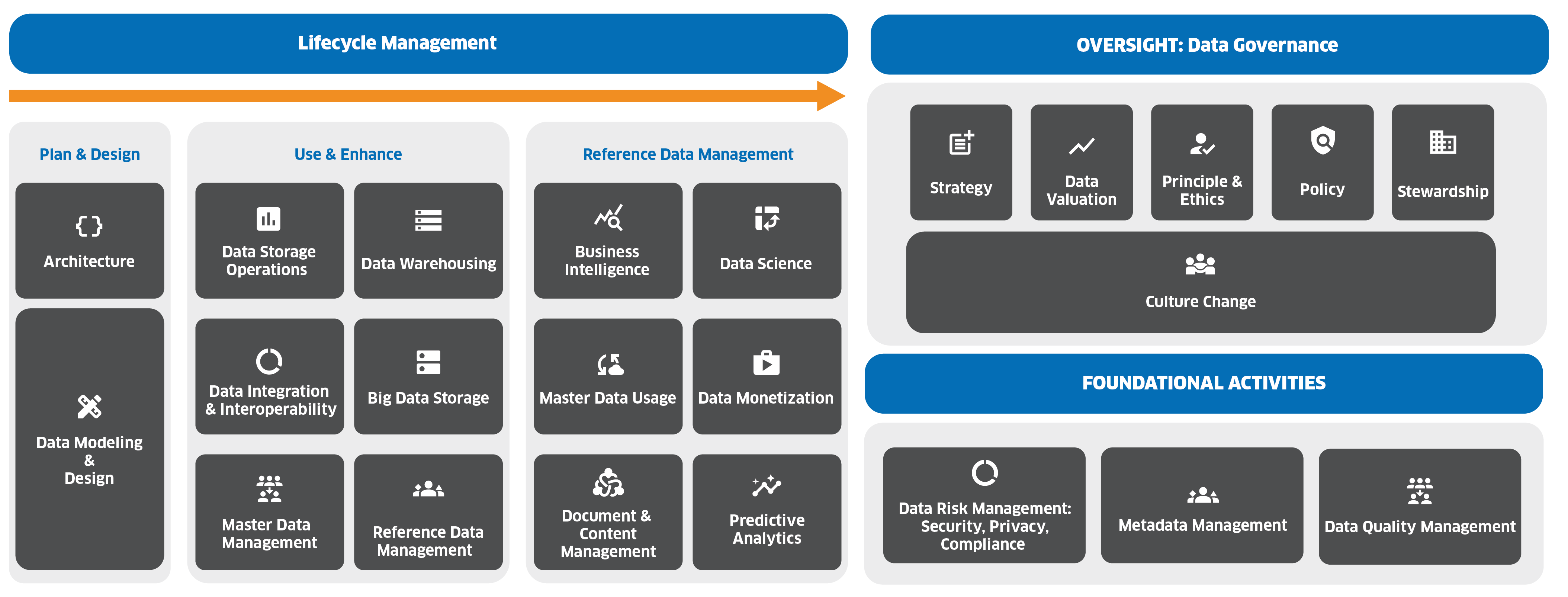
Landing Area
Here, data is ingested, time-stamped, tagged with metadata, and perhaps encrypted. It is also often ingested in increments via change data capture and snapshots via periodic refreshes to support time series and other analyses. Very few business users, if any, access the data in this zone since it’s still in its raw state, reflecting source system schemas. Only data scientists (~2% of employees) access this zone. They prefer to use raw, atomic data rather than the scrubbed, transformed, and aggregated data found in a data warehouse.
Data Hub
The data hub consists of base-level tables that feed downstream systems and tools. The base tables consist of clean, flattened, subject-area tables as well as master data, reference data, and standard KPIs and dimensions that can serve as the building blocks of analytic
applications. Data analysts (~8% of employees) access the hub to populate self-service visualization tools and create dashboards to share with others.
applications. Data analysts (~8% of employees) access the hub to populate self-service visualization tools and create dashboards to share with others.
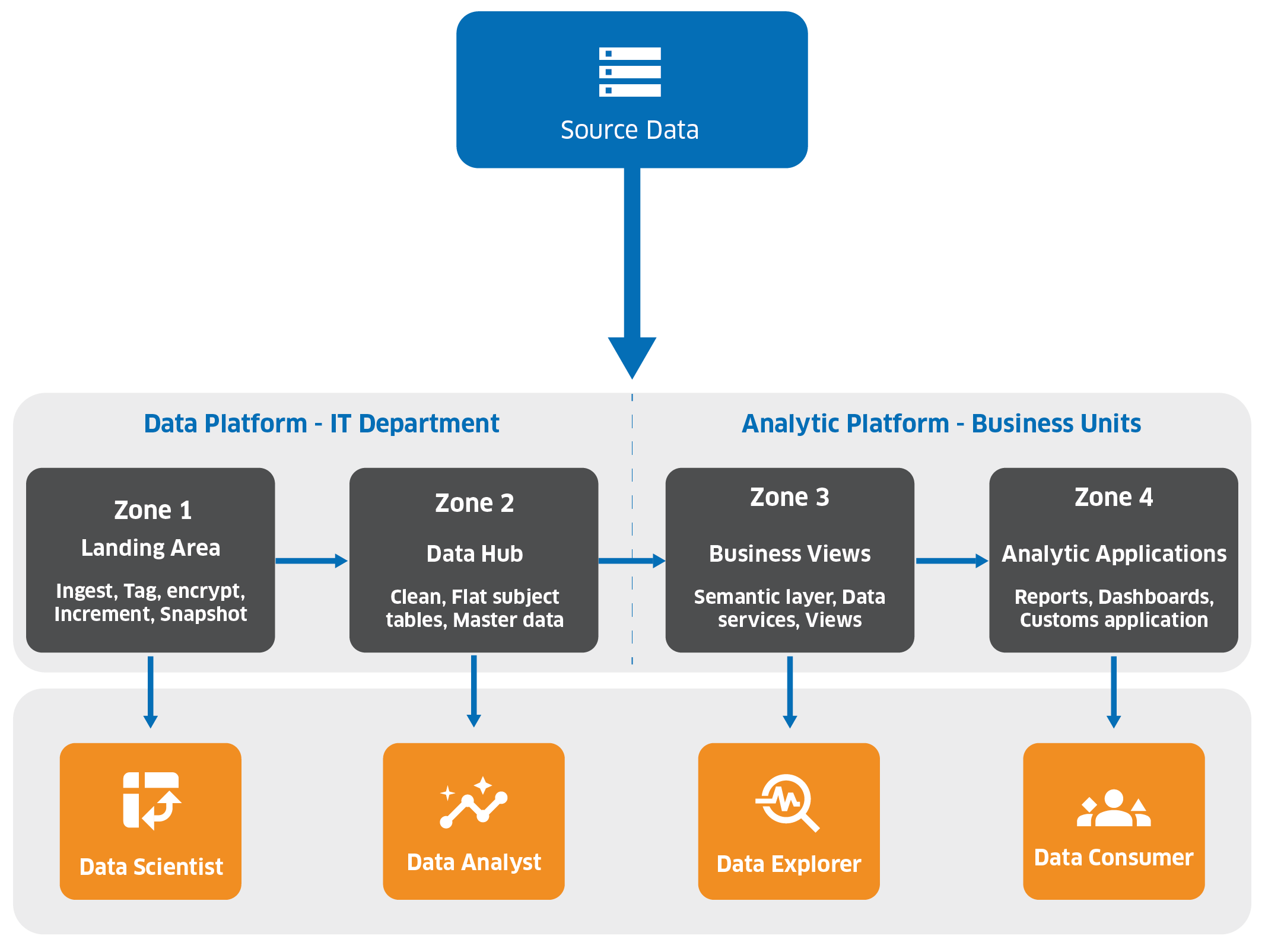
Business Views
A business view represents data in the hub or elsewhere that data explorers (~30% of employees) can view, manipulate, and query. A business view can be the semantic layer of a BI tool, a database view, or a data service provided by a data
virtualization tool or data-centric API. The business view makes it easy for data explorers to edit existing reports and dashboards or create ad hoc reports to get exactly the information they need to make decisions or take action.
virtualization tool or data-centric API. The business view makes it easy for data explorers to edit existing reports and dashboards or create ad hoc reports to get exactly the information they need to make decisions or take action.
Analytic Applications.
Here, data consumers (~60% of employees) consume predefined reports and dashboards built by data analysts, data engineers, or the IT department using BI tools and custom development environments. The data consumers view, navigate, and interact with these reports and dashboards that can answer 60–80% of the questions they ask on a daily basis and use self-service BI tools for the remainder.
The Modern Analytics Ecosystem
The modern analytics ecosystem
Supports multiple data pipelines and bidirectional flows of data. But all the components work together seamlessly to support the continuous flow of data from source to users, who are shielded from its complexity through data abstraction tools.
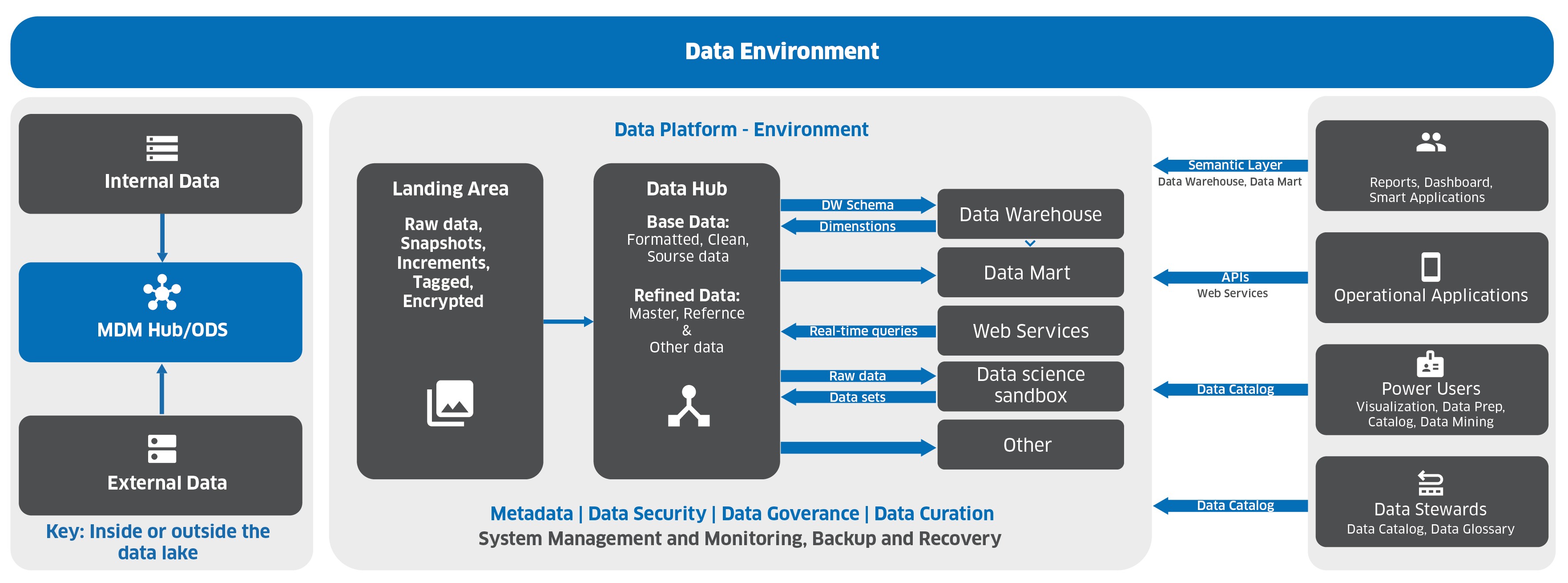
Bidirectional
In addition, the information supply chain is not linear. Rather, it is iterative and bidirectional. Many downstream systems feed data back into the data hub, where the data or artifacts (i.e., metrics, dimensions, reference data) can be reused.
Data Environment
Each element depicted in the data environment can be implemented numerous ways; some might reside in a data lake, lakehouse or, data warehouse and others outside of it, in a relational database or the cloud. There is no single best way to design a data environment. That’s because data processing technologies are evolving fast. Relational, Hadoop, NoSQL, and cloud platforms continue to add features and functions, perpetually shifting which workloads each platform is best suited to support; however, both the data warehouse and data lake can form the backbone of any data analytics processing environment and meet the data management needs of modern enterprises.
Abstraction
Business users (and some developers) are shielded from the complexity of this ecosystem by data abstraction tools. Specifically, casual users query data via reports or BI semantic layers that make all data appear unified and local. Power users typically search a data catalog to download relevant data sets and publish their output back into the catalog for others to use
Use Cases
Data Platforms
- (Data = known + Questions = Known) >> Data virtualization + Traditional DW
- (Data = Known + Questions = Unknown) >> Traditional DW
- (Data = unknown + Questions = Known) >> Context-Independent DW + Data Lake + Data Virtualization + Data Science
- (Data = Unknown + Questions = Unknown) >> Data Lake + Data Science + Context-Independent DW +Data Virtualization

Analytics platform
- (Data = known + Questions = Known) >> Reporting + Traditional BI (Visual-Based Exploration)
- (Data = Known + Questions = Unknown) >> BI (Visual-Based Exploration)
- (Data = unknown + Questions = Known) >> Context-Independent BI (Visual-Based Exploration) + Augmented Analytics
- (Data = Unknown + Questions = Unknown) >> Context-Independent BI (Visual-Based Exploration) + Supporting Augmented Analytics
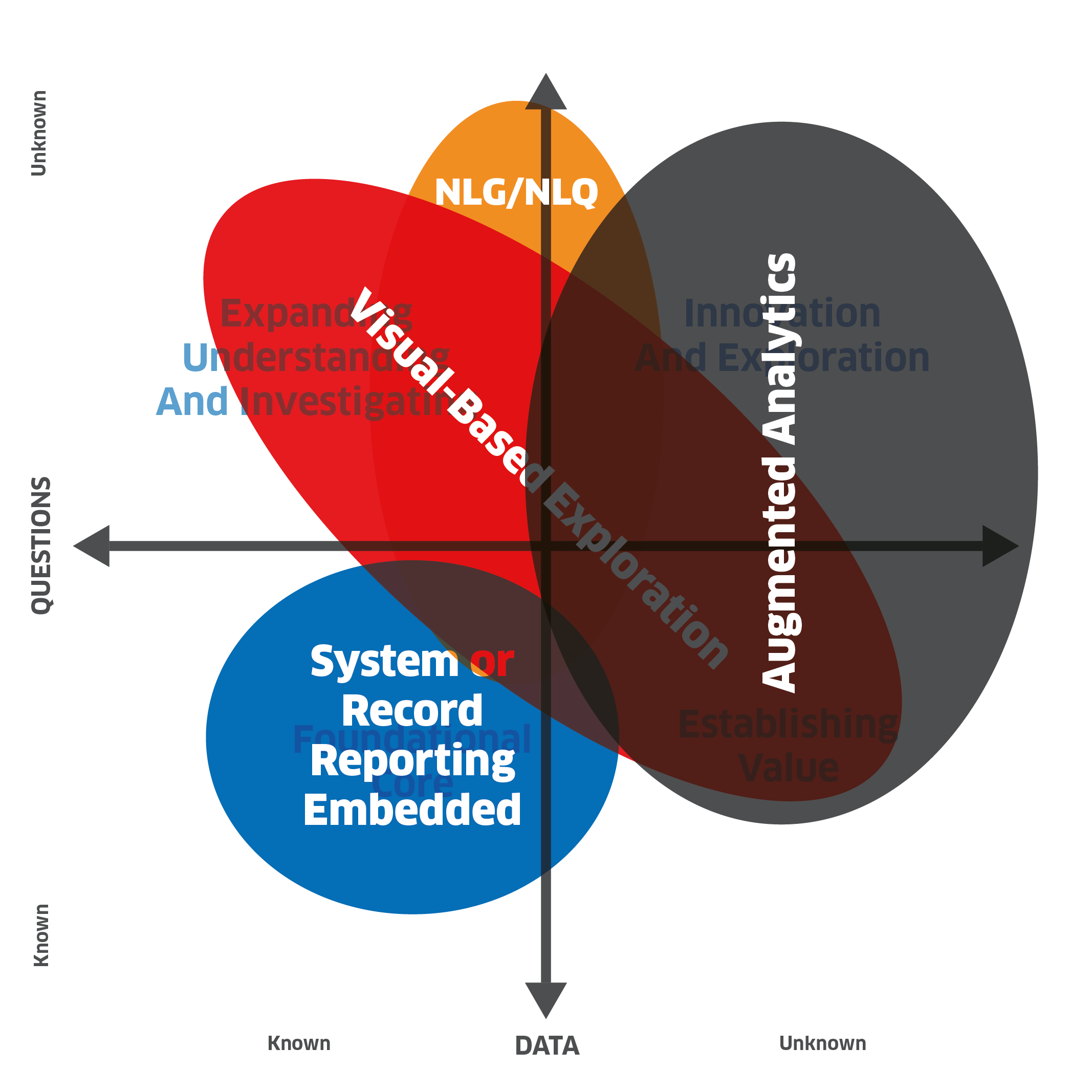
Technologies portfolio
Data Ingestion
The process of obtaining and importing data for immediate use or storage in the database; Data can be streamed in real-time or ingested in batches.

Data Storage
All Data formats, e.g., structured, semi-structured, and unstructured, can be recorded and stored in relational (SQL) and non-relational databases (NoSQL).
Data Integration
The process of combining data from different sources into a single, unified view; begins with the ingestion process and includes steps such as ETL, cleansing, and mapping as well as transformation.
Data Management
The practice of collecting, organizing, protecting, and storing an organization’s data; it includes data preparation, data pipelines, data catalog, data governance, data architecture, data security, data modeling, metadata, as well as master & reference data management.
Data Processing
Data processing occurs when data is collected and translated into usable information. Usually performed by a data scientist or team of data scientists, it is important for data processing to be done correctly so as not to negatively affect the end product or data output.
Data Sharing
Data sharing as a technology has become highly relevant for businesses of all sizes, whether they need to disseminate data across a large, global organization or need to augment internal data with broader market data to gain better insights.
Data Science
Data science is the field of study that combines domain expertise, programming skills, and knowledge of mathematics and statistics to extract meaningful insights from data.
Data Analytics
The process of examining data sets in order to find trends and draw conclusions about the information they contain.

